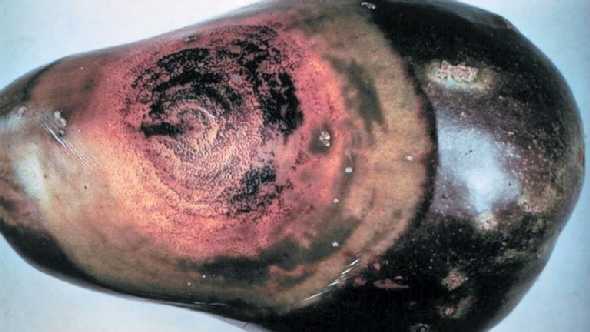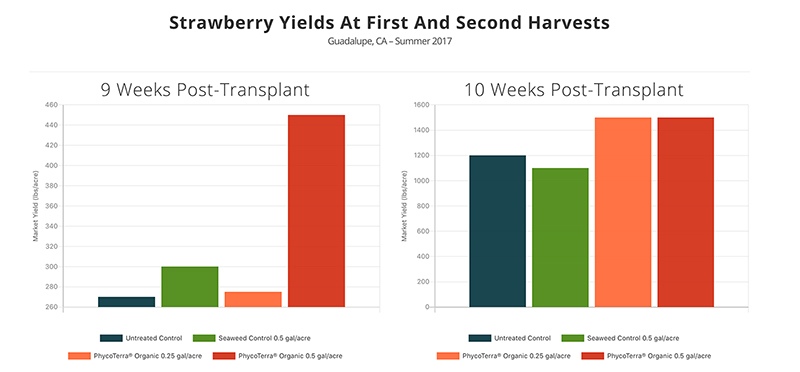Eggplant Producers Need To Keep Phomopsis Blight In Their Sight

Photo by David Langston
Disease Specs
Phomopsis blight, caused by the fungus Phomopsis vexans, is a major disease of eggplant in Florida. It occurs primarily on the fruit and occasionally on leaves or stems.
Identification
Fruit lesions appear sunken, discolored, and soft with a surrounding margin of black fruit bodies. Lesions typically begin as a pale, sunken, oval-shaped area on the fruit surface. These progressively enlarge and become depressed. Eventually, large portions of the fruit are affected, rendering it unmarketable. Fungal fruiting bodies form in concentric circles inside fruit lesions.
If conditions are dry, infected fruit become shriveled and form mummies.
Leaves and stems also may be affected. Older leaves are more susceptible to infection. Leaf and stem lesions are typically circular, gray to brown, and develop a light center. In the center of older lesions, fruiting bodies called pycnidia can be observed as small, black pimples embedded in the host tissue.
Affected leaves may turn yellow and drop prematurely. Infection of foliage is less important than fruit infection.
Seedlings infected with phomopsis blight exhibit dark brown lesions that turn gray in the center of the lesion just above the soil line. Eventually, these lesions may girdle the stem and kill the plant.
Survival And Spread
Phomopsis is favored by hot and wet weather. The optimum temperature for fungal growth is 84°F and it grows well up to 90°F.
The disease survives between crops on seeds and in plant debris in the soil. The non-cropping season in South Florida is very short, enhancing the survival potential of the pathogen.
Disease occurs when spores are released from a fungal fruiting body (pycnidia) and dispersed by splashing rain, insects, and contaminated equipment. The major means of spread is by rain splashing. Wind dispersal is usually considered to be of minor importance. Spores germinate rapidly when free moisture is present on stems or leaves.
Management Methods
If feasible, it is advisable to practice a three-year or longer crop rotation between eggplant crops. Prompt destruction of crop residues after harvest will help reduce initial inoculum.
Two eggplant varieties, Florida Market and Florida Beauty, have good resistance to the seedling canker stage of the disease, but are still fairly susceptible to the leaf, stem, and fruit infection stages.
A spray program with a protectant fungicide is necessary to maintain yield and quality. Various copper fungicides are labeled for this purpose. Newer fungicides, such as Cabrio (pyraclostrobin, BASF), Quadris (azoxystrobin, Syngenta), and Endura (boscalid, BASF), are registered for use on eggplant, but their efficacy against phomopsis fruit rot is unknown.
If disease is identified in the field, treatment with a recommended fungicide is advisable. The disease is difficult to manage with fungicides because the smooth skin of the fruit does not allow good adhesion of sprays. Fungicides are most effective when combined with cultural control strategies.










